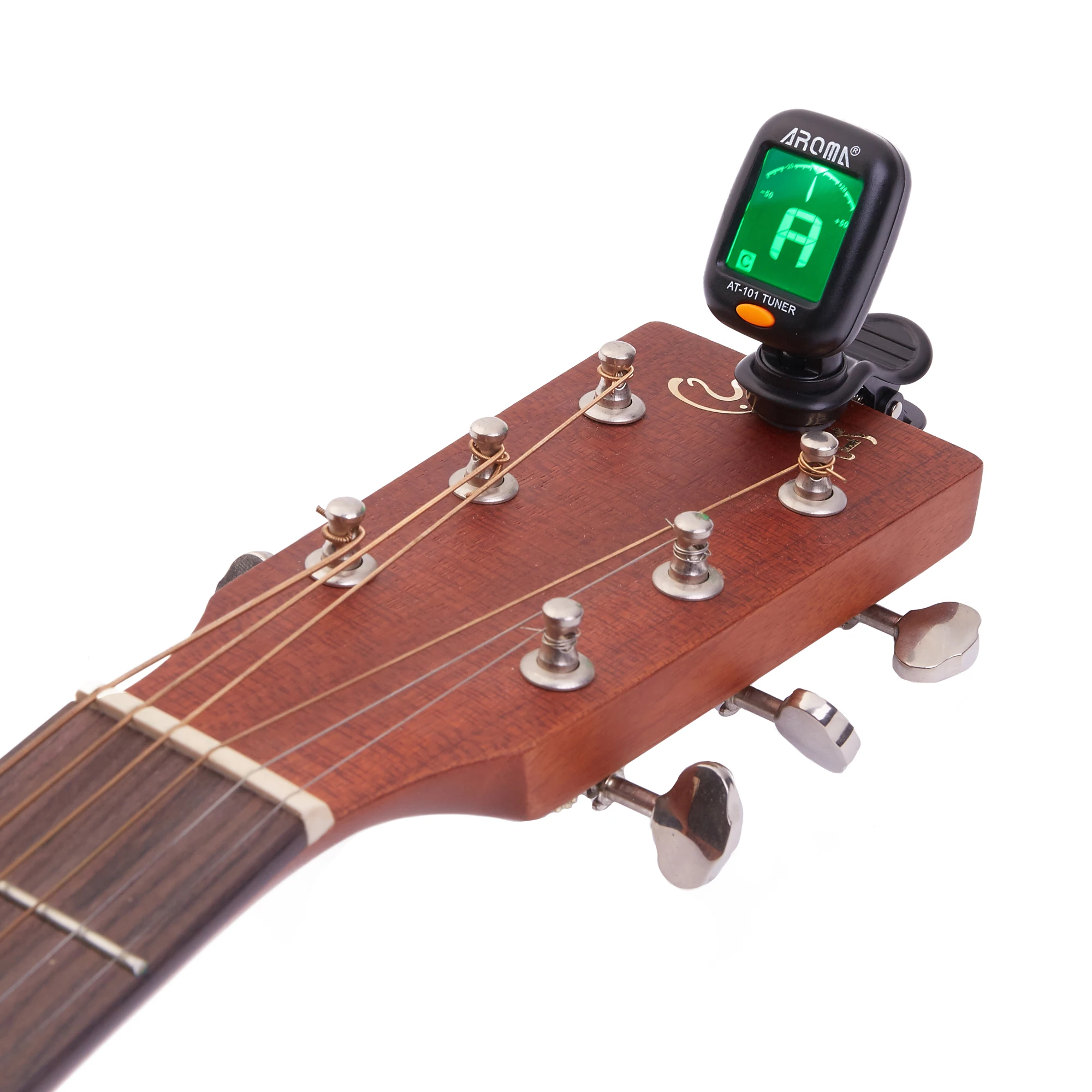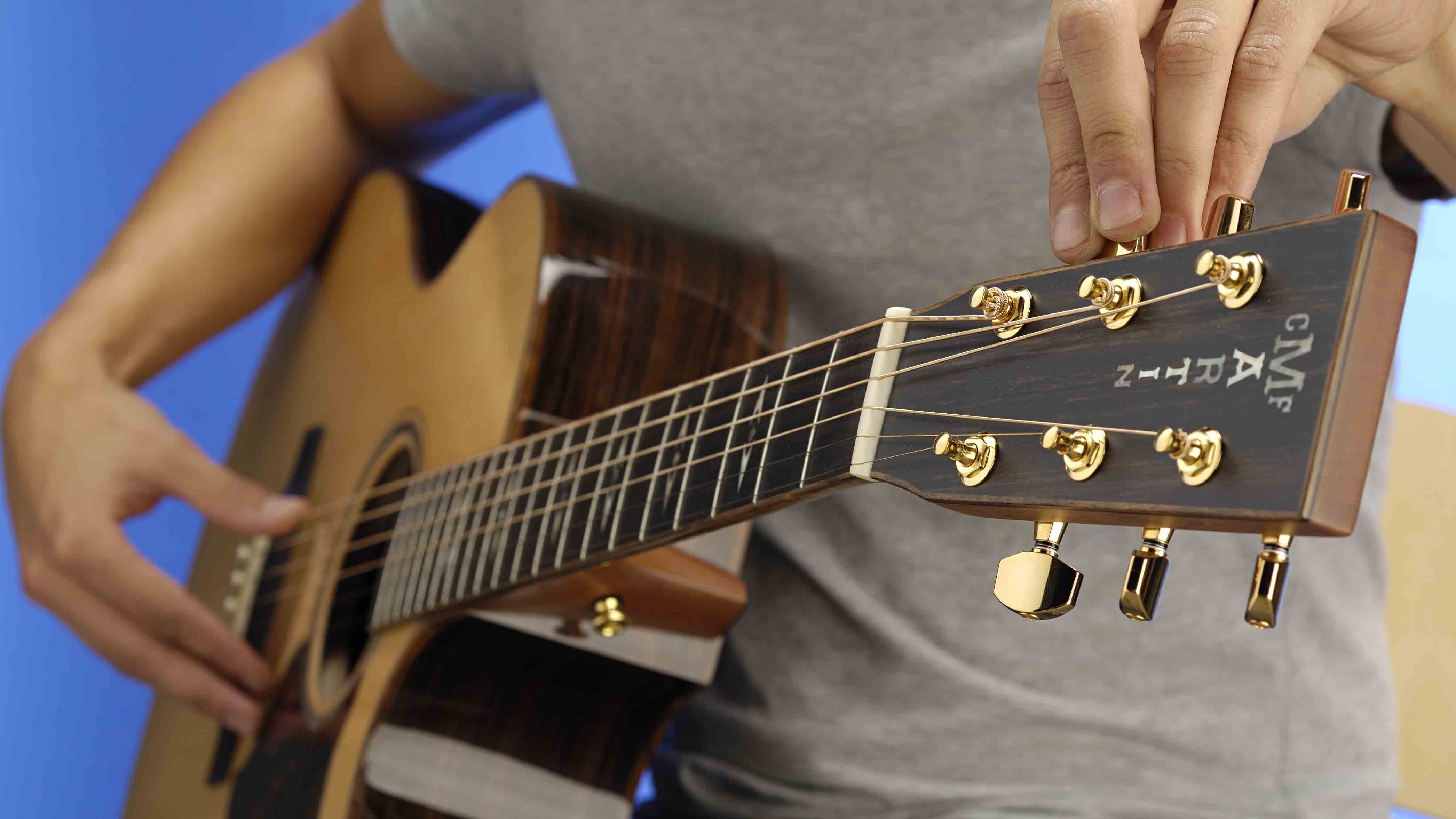

We'll use this concept to tune the rest of the strings. So, we can play the open fifth string, also an A, and check to see if it sounds the same as the note on the sixth string. Knowing this note is in tune, we can use it as a reference pitch, and tune the open fifth string until it sounds the same as the sixth string, fifth fret.īecause this string is in tune, we can assume that this note, A, on the fifth fret, is also in tune. Using this knowledge, we can count up the low E string (which is in tune), until we reach the note A, on the fifth fret.
#Tuner guitar how to#
We also know, from lesson four, how to count up a string, and find the names of the notes on that string. We know, from lesson two, that the names of the six open strings are E A D G B and E. Using just a little bit of very basic music theory, we can see how we'll do that. Now that we have our sixth string in tune, we need to get our other five strings tuned to that note. Now that we've got our sixth string in tune, let's move on to learning how to tune the rest of the strings. If the E you play on the piano sounds much higher, or lower than your low E string, try playing a different E on the piano, until you find the one closest to your open sixth string. Note that the E you play on the piano may not be in the same octave as the low E string on your guitar. Play that note, and tune your low E string to it. The white note directly to the right of the set of two black keys is the note E. This pattern is repeated for the length of the keyboard. Look at the black keys on the keyboard of the image above, and notice that there is a set of two black keys, then an extra white key, then a set of three black keys, then a white key.

If you have access to a piano, you can alternately tune your low E to the same note on the piano. Repeat the audio track as many times as you need to, in order to try and match the note perfectly. Thus the need for a standard reference pitch. You'll need to make sure that your E note sounds the same as theirs. In order to interact with other instruments, being in tune with yourself isn't enough. When you try and play with another instrument, however, you will probably sound out-of-tune. We recommend tuning your guitar before each practice session.Without a reference pitch, you can tune your guitar, and it will sound fine on its own. Repeat moving down the strings and remember to be careful with the bottom ‘e’ stringĪs with all guitars, temperature and humidity changes can affect the tuning of a guitar.

Gently turn the tuning pegs until the needle points straight upwards towards the middle and the screen turns green to show that the particular string is now tuned. The aim is to adjust the strings by tightening or loosening using the tuning pegs as described above. The screen will be blue if the note is not perfectly in tune. Pluck the string and you will notice that the tuner will light up and display the note. Tune one string at a time, starting with the E string. Press the button twice and then scroll through the settings until you reach the ‘guitar’ setting as shown below.Ĭlip the digital tuner to the head of the guitar ensuring that it is not obscuring the strings or the tuning heads. Take the tuner out of the box and press on. Now you are familiar with the process of tuning, use your digital tuner to tune your guitar to pitch perfect! Using The Digital Tuner to Tune Your Guitar Note: Be extra careful when tuning the thinner ‘e’ string as too much tightening can snap the string. You will notice as the strings get tighter the note gets higher and turning in the opposite direction will make the strings looser and the note lower. To tune your guitar you will need to gently turn each peg.
#Tuner guitar full size#
To do this you just need to follow through your string up to the head of the guitar.Ĭlassical Nylon String Guitar (Children and Full Size Classical) The next step is to follow the string to its respective tuning peg. E (top string) - A (2nd) - D (3rd) - G (4th) - B (5th) - E (bottom string with the thinnest string) The aim of the digital tuner is to equal the desired note for each string.įrom top to bottom. The first thing to familiarise yourself with is the notes on your guitar and which of the strings produces each note. A digital guitar tuner uses an LCD display to determine if the pitch is lower, higher, or equal to the desired pitch. A Guide to Using a Digital Tuner to Tune an Acoustic GuitarĪ guitar tuner is a device that detects and displays the pitch to open strings of a guitar.


 0 kommentar(er)
0 kommentar(er)
